How Clean Are Dog Parks and Who Maintains Them?
Dog parks are fantastic spaces for your furry friends to socialize, exercise, and enjoy the outdoors. However, one pressing question often arises: how clean are dog parks, and who is responsible for their maintenance? Understanding this can help you make informed decisions about where to take your pet while keeping their health and safety in mind.
When you visit a dog park, cleanliness is vital for your dog’s well-being. Parks can harbor various environmental challenges, including waste, parasites, and bacteria. Regular management is essential to keep these parks safe and enjoyable. So, how do dog parks maintain cleanliness?
Common Maintenance Practices
Municipalities and local organizations generally take charge of keeping dog parks clean. Here are some standard maintenance practices you can expect:
- Regular Waste Collection: Most parks provide waste disposal stations with bags and trash cans. City workers or volunteers usually empty these bins several times a week.
- Groundskeeping: Mowing the grass, removing debris, and maintaining pathways are essential tasks that ensure a safe play area.
- Sanitization: While not always frequent, certain parks may undergo occasional sanitization treatment to eliminate harmful pathogens lurking in the soil or on surfaces.
- Inspections: Local authorities may conduct routine inspections to identify any safety hazards or cleanliness issues. This helps ensure the park remains a safe environment.
Community Involvement
Community involvement plays a huge role in maintaining the cleanliness of dog parks. Many dog owners feel a responsibility to help keep the parks tidy. You might notice informal cleanup events organized by dog owner groups. These events promote a sense of community while tackling cleanliness in a fun and engaging manner.
Moreover, many parks encourage dog owners to adopt a “leave no trace” mentality. This can include:
- Picking up after their pets
- Reporting issues like overflowing trash bins
- Organizing group clean-ups
Impact of Cleanliness on Health
Clean dog parks reduce the risk of transmitting parasites, diseases, and infections among pets. Common concerns include:
| Health Risk | Description |
|---|---|
| Parasites | Common parasites like worms can spread through feces left uncollected. |
| Bacterial Infections | Unsanitary conditions can lead to the spread of bacteria such as E. coli. |
| Allergies | Poor park management can lead to an increase in allergens like mold or pollen. |
Engaging in regular maintenance ensures that dog parks can serve their purpose effectively while safeguarding your pet’s health. Always stay vigilant as a dog owner and keep an eye on the cleanliness of the park you recurrently visit.
Finding Clean Dog Parks Near You
Not all dog parks are created equal. Some are better maintained than others. To find a clean dog park, you might consult online resources or local community forums. Websites such as Bring Fido or Rover can help you search for well-reviewed parks based on cleanliness and amenities.
Remember to read reviews or even ask other dog owners about their experiences in specific parks. Their firsthand insight can help you find a clean and enjoyable space for your pet.
Tips for Visiting Dog Parks
When you decide to visit a dog park, here are some tips to enhance your experience while contributing to cleanliness:
- Bring waste bags and use them to clean up after your dog.
- Respect park rules, such as leash regulations and designated areas.
- Wash your dog after visits, especially if the park appears muddy or unsanitary.
- Stay alert and watch for any signs of distress in your dog. A clean park should also be a safe one.
Ensuring your local dog park remains clean is a shared responsibility that benefits you, your dog, and the community. Engage with other pet owners and contribute to maintaining a clean environment that everyone can enjoy.
The Importance of Regular Maintenance in Dog Parks
Dog parks play a vital role in the community, providing a safe and enjoyable space for dogs to socialize, play, and exercise. However, the cleanliness and overall upkeep of these parks heavily depend on regular maintenance. Understanding the significance of maintenance in dog parks ensures not only a pleasant experience for dogs and their owners but also promotes public health and safety.
One of the primary concerns in dog parks is hygiene. Parks often have dog waste, which can lead to health hazards if not managed properly. Regular maintenance helps mitigate these risks by ensuring:
- Frequent Waste Removal: Regularly scheduled waste pickups prevent waste from accumulating, which can attract pests and cause disease. This is crucial for keeping the environment clean.
- Sanitation of Surfaces: Brushing and disinfecting common areas, like benches and pathways, ensures that harmful bacteria do not spread.
Moreover, routine inspections of park facilities and equipment are essential. A well-maintained dog park ensures safety for both pets and humans. Regular checks help identify:
- Damaged Fencing: Broken fences can lead to accidents or escaped pets. Monitoring the condition of the fence protects both dogs and visitors.
- Wear and Tear of Play Equipment: Parks often feature agility courses and equipment. Regular inspections ensure that these items are safe and functional, reducing the chance of injury.
Another aspect of maintenance involves landscaping. Overgrown vegetation, untrimmed bushes, or muddy areas can deter visitors. By regularly mowing grass and controlling weed growth, dog parks can offer a welcoming environment. This also includes:
- Drainage Management: Maintaining proper drainage is vital to avoid puddles and mud, which can be messy for dogs and their owners.
- Aesthetic Appeal: A well-kept park enhances the overall experience, making owners more likely to visit and spend time there.
Community involvement is also a crucial part of maintaining dog parks. Local volunteers or community groups often play a significant role in regular cleanups and upkeep. It’s essential for dog owners to take responsibility by following park rules, such as:
- Cleaning up after their pets
- Reporting maintenance issues to authorities
Park agencies typically have designated teams responsible for maintenance. These teams ensure that dog parks remain clean and safe. The frequency of these maintenance visits can vary from one park to another, but a well-planned schedule is necessary for success. Factors that contribute to the need for regular maintenance include:
| Factor | Frequency of Maintenance |
|---|---|
| Dog Population | Daily |
| Size of Park | Weekly |
| Seasonal Changes | Monthly |
Visitors can contribute to the maintenance of dog parks by advocating for proper funding and resources. Contacting local officials or joining community meetings can lead to better management of the facilities. Many dog park enthusiasts find success in establishing a “Friends of the Dog Park” group to address concerns collectively.
It’s important to remember that a well-maintained dog park benefits everyone—both pets and owners. Clean parks foster a positive environment where dogs can safely interact and play. As a dog owner, your engagement in maintaining these spaces illustrates the shared responsibility we all have.
To learn more about the importance of dog park maintenance and initiatives happening in your area, check out resources like the National Parks and Recreation Association or local community boards, which often provide updates on park conditions and maintenance schedules.
The importance of regular maintenance in dog parks cannot be overstated. It directly correlates to pet health, community pride, and the overall enjoyment of these public spaces. By investing in regular maintenance, communities ensure that these vibrant areas remain safe and welcoming for every patron.
Common Hygiene Issues Faced in Dog Parks
Dog parks are cherished spaces for pet owners and their furry friends to socialize, exercise, and play. However, they also come with their own set of hygiene issues that can affect both pets and their owners. Understanding these common concerns can help you take better care of yourself and your dog while enjoying a day at the park.
Dog Waste Management
One of the most significant cleanliness concerns in dog parks is the presence of dog waste. While most parks provide waste bags and disposal stations, not all pet owners take responsibility for cleaning up after their pets. Leaving waste behind can create unsanitary conditions and pose health risks.
Here are some key aspects regarding dog waste management:
- Availability of Waste Disposal: Ensure that dog parks you visit are equipped with ample waste disposal stations.
- Owner Responsibility: Encourage responsible pet ownership by picking up after your dog.
- Health Risks: Dog waste can harbor diseases and parasites that affect other dogs and even humans.
Dog Park Hygiene Practices
While dog parks are community areas, maintenance often relies on volunteers and local authorities. Regular maintenance includes cleaning up waste, refilling bag stations, and ensuring the park’s overall cleanliness. Here are common practices for maintaining hygiene:
- Regular Cleanups: Many parks schedule regular cleanups to pick up waste and debris.
- Surface Care: Parks may use natural materials, such as wood chips or gravel, that can harbor bacteria and parasites if not maintained.
- Daily Inspections: Conduct daily inspections to ensure the area is safe and clean for dogs.
Water Sources
Access to fresh water is crucial for dogs, especially during hot days at the park. However, communal water bowls or fountains can also pose a risk for spreading germs.
- Regular Cleaning: Water sources should be regularly cleaned to prevent algae growth and contamination.
- Health Monitoring: Owners should monitor their dog’s health and avoid communal water if a dog appears sick.
- Hydration: You may want to carry your own portable water container to keep your dog properly hydrated.
Dog Behavior and Socialization
While socializing at the dog park, it’s important to consider your dog’s behavior and how it impacts hygiene. Aggressive or overly excited dogs may lead to scuffles and heightened stress, potentially leading to accidents.
- Evaluate Dog Compatibility: Always assess if your dog is comfortable interacting with others.
- Monitor Playtime: Watch for signs of aggression or anxiety during play; intervene if necessary.
- Socialization Training: Consider training that promotes positive interactions for better behavior.
Paw Health and Outdoor Hazards
The surfaces your dog walks on in a park can also be a concern for hygiene. The terrain might harbor sharp objects, harmful chemicals, or even parasites like ticks.
- Sharp Objects: Check for glass, metal, or any debris that may harm your dog’s paws.
- Pesticides and Chemicals: Areas may be treated with chemicals that can be harmful to dogs; inquire about park maintenance practices.
- Parasite Prevention: Ensure your dog is up to date with flea and tick prevention.
| Hygiene Concern | Prevention Measure |
|---|---|
| Dog Waste | Always pick up after your dog. |
| Water Quality | Bring your own water and avoid communal sources when possible. |
| Paw Hazards | Inspect park surfaces before playtime. |
Being aware of these common hygiene issues can significantly enhance your dog park experience. Taking a few simple precautions helps keep the park enjoyable for everyone and minimizes hygiene risks for you and your dog.
For more information on maintaining a clean dog park, consider visiting AKC Dog Park Etiquette and PetMD on Dog Parks.
The Role of Local Governments in Dog Park Cleanliness
Dog parks provide a vital space for pet owners to allow their dogs to socialize and exercise freely. However, the cleanliness of these parks often raises concerns among users. Local governments play a pivotal role in maintaining the cleanliness and safety of these spaces. Understanding how local government agencies contribute to dog park cleanliness can help pet owners appreciate their efforts and encourage responsible pet ownership.
Local governments typically take the following measures to maintain dog parks:
- Regular Cleaning: Municipalities establish cleaning schedules that include waste pickup, debris removal, and surface maintenance. Parks are often cleaned daily or several times a week, depending on their usage levels.
- Waste Disposal Facilities: Strategic placement of dog waste stations, equipped with bags and bins, is critical. These facilities encourage pet owners to clean up after their pets, reducing messes left on the ground.
- Public Education: Local governments often run campaigns to educate dog owners about park etiquette. This includes the importance of cleaning up after one’s dog and adhering to leash laws.
- Regular Maintenance: Beyond cleanliness, maintenance includes repairing fences, ensuring play equipment is safe, and maintaining pathways and grass areas.
A clean dog park is not only pleasant for its users but essential for the health and safety of dogs and their owners. Local governments often collaborate with community organizations to enhance park conditions, utilizing volunteers and community service workers for additional support.
Pet owners can also play a role in maintaining cleanliness in dog parks. Here are some simple steps to follow:
- Always bring waste bags and promptly clean up after your dog.
- Report any issues with waste disposal facilities to your local government.
- Encourage others to clean up by setting a good example.
- Participate in community clean-up events organized by local governments.
Monitoring the cleanliness of dog parks involves more than just observing the immediate environment. Local governments frequently conduct checks and receive feedback from park users to address any concerns. They often organize meetings or surveys to identify problem areas and gather input on cleanliness-related issues. Feedback from the community can lead to improvements, making the parks better for both pets and their owners.
The maintenance of a dog park can vary significantly depending on the municipality’s budget and resources. In wealthier areas, you might find well-kept parks with full-time staff dedicated to upkeep. In contrast, smaller or less affluent cities may face challenges in providing the same level of care due to limited funding. This discrepancy can result in varying standards of cleanliness from one community to another.
You may wonder how often your local dog park is cleaned. Many cities post this information online, or you can inquire directly through your municipal parks and recreation department. For instance, the City of Napa provides cleaning schedules and lists of local park services online. Such resources make it easier for dog owners to stay informed.
| City | Cleaning Frequency | Available Facilities |
|---|---|---|
| Seattle | Daily | Waste stations, water fountains |
| Austin | Weekly | Waste bags, signage |
| San Francisco | Every other day | Multiple waste bins, agility equipment |
By making cleanliness a community goal, local governments foster a sense of shared responsibility among dog owners. Many municipalities have taken the initiative to improve park conditions, implementing programs that not only clean parks but empower users to maintain them. City organizations and local volunteers often host events where dog owners can help with cleaning or park enhancements, thus promoting camaraderie and involvement within the community.
In addition to physical maintenance and cleaning, local governments also ensure parks meet safety standards. This often includes inspecting equipment regularly, enforcing park rules, and providing information on park hours and permitted activities. Safety guidelines are crucial in preventing accidents and ensuring a positive atmosphere for all users.
Understanding the role of local governments in dog park cleanliness can help you appreciate the collective effort made to maintain these valuable community resources. It also emphasizes the importance of each dog owner’s responsibilities within these shared spaces. By participating in local initiatives and adhering to park etiquette, you contribute to a cleaner, safer environment for everyone.
Community Involvement in Keeping Dog Parks Clean
Many dog owners cherish the experience of taking their furry friends to local dog parks. These communal spaces offer not just a chance for dogs to play and socialize, but also an opportunity for owners to engage with one another. However, a crucial aspect of maintaining the enjoyable and safe environment in these parks lies in community involvement.
Keeping dog parks clean requires the cooperation of dog owners, park staff, and community volunteers. When everyone pitches in, it ensures that the facilities remain in good condition, allowing for a positive experience for both pets and their owners.
Why Community Involvement Matters
Community involvement plays a vital role in maintaining the cleanliness and overall quality of dog parks. Without active participation from dog owners and local residents, parks can quickly become neglected. Here are several reasons why your involvement is essential:
- Shared Responsibility: When everyone helps, the burden of maintenance doesn’t fall on a few individuals. Each person’s contribution matters and can make a big difference.
- Health and Safety: A clean park keeps dogs and their humans safe. It reduces the risk of disease and injuries caused by unsightly trash or hazardous items.
- Community Building: Participating in park clean-ups fosters a sense of belonging among residents. It creates connections that help strengthen neighborhood ties.
- Positive Environment: Clean parks attract more visitors and create a welcoming atmosphere for everyone.
Ways to Get Involved
Participating in keeping your local dog park clean can be both rewarding and fun. Here are some practical ways you can contribute:
- Regular Clean-ups: Organize or participate in clean-up events. Many communities host monthly or quarterly events where dog owners gather to pick up litter and maintain the park’s facilities.
- Pick Up After Your Dog: Always carry waste bags when visiting the park. Make it a habit to dispose of any waste properly. This is the simplest yet most effective way to keep the park clean.
- Report Issues: If you notice damaged equipment or an abundance of litter, notify local authorities. Contact local parks and recreation departments for assistance in addressing these concerns.
- Advocate for Resources: Work with your community members to advocate for more resources. This could mean requesting more trash bins or asking for regular maintenance visits from park staff.
How Local Governments Contribute
Local authorities also have a significant role in ensuring the cleanliness of dog parks. They often allocate budgets for park maintenance, including cleaning and repairs. However, community involvement amplifies these efforts tremendously.
| Government Actions | Community Contributions |
|---|---|
| Regular maintenance schedules | Organizing clean-up events |
| Providing waste disposal stations | Encouraging responsible pet ownership |
| Responding to reports of issues | Reporting problems promptly |
The Effectiveness of Community Partnerships
Successful partnerships between communities and local governments can lead to better-quality parks. Many localities have adopted programs where volunteers can take on small projects or tasks to keep parks efficient and clean. It’s not just about dog parks; it reflects a broader commitment to community well-being.
Research indicates that parks maintained with a collaborative approach tend to see less litter and better overall condition. Local organizations and volunteer groups often claim these spaces for clean-up initiatives, which can significantly improve park conditions.
For more insights on community-led park initiatives and tips on how you can help, consider checking out Trees Are Good and Napa Wash, which provide excellent resources for community engagement and park stewardship.
The cleanliness of dog parks largely hinges on the involvement of the community. By working together and taking pride in maintaining these spaces, dog owners contribute not just to the well-being of their pets but also to the overall health of their neighborhoods. Remember, every little action counts!
How to Encourage Responsible Dog Ownership in Public Spaces
Owning a dog is a rewarding experience, but it also comes with responsibilities, especially in public spaces. Encouraging responsible dog ownership helps create a safer and more enjoyable environment for both dogs and their humans. Here are practical strategies to promote responsible behavior among dog owners in public areas.
Educate Dog Owners About Local Regulations
Understanding local pet regulations is crucial for responsible dog ownership. Owners should be aware of leash laws, breed restrictions, and designated dog parks. You can help by sharing this information through:
- Online resources: Websites like American Humane provide extensive resources on pet regulations and responsibilities.
- Community workshops: Organize workshops on responsible dog ownership that cover local laws and guidelines.
- Social media: Use social platforms to disseminate information and updates about dog ownership laws in your area.
Promote Training and Socialization
Training is essential for all dogs, especially in public spaces. It ensures they are well-behaved and socialized. Encourage dog owners to:
- Attend classes: Recommend local obedience classes or training sessions to enhance skills.
- Socialize with other dogs: Suggest visiting dog parks for controlled social interactions.
- Practice commands: Encourage owners to regularly practice commands like sit, stay, and come with their dogs.
Provide Waste Disposal Solutions
Cleaning up after dogs is a fundamental part of responsible ownership. Ensure that dog owners are equipped and motivated to clean up after their pets. Here are ways to enhance waste disposal:
- Install waste stations: Place dog waste stations with bags and trash cans in public areas and parks.
- Share statistics: Educate owners on the impact of not cleaning up, such as affecting local wildlife and public health.
- Lead by example: Be a role model by consistently cleaning up after your own dog, showing others the importance of this practice.
Encourage Leash Use and Control
Keeping dogs on leashes in public spaces helps prevent accidents and ensures the safety of all park-goers. Here’s how to encourage leashing:
- Share the benefits: Explain that leashes help dogs avoid dangerous situations and keep them safe from running into traffic.
- Promote proper gear: Recommend using a sturdy and comfortable leash that is appropriate for the dog’s size and breed.
- Organize leash training: Host events that include lessons on leash handling and control techniques.
Foster a Community Spirit
Creating a sense of community can foster responsible dog ownership. Here are some ideas:
- Dog owner meet-ups: Organize regular events where dog owners can gather, share tips, and connect with one another.
- Support local shelters: Encourage community members to volunteer at or donate to local animal shelters and rescue organizations.
- Start a newsletter: Create a newsletter featuring tips, local events, and success stories of responsible dog ownership.
Utilize Technology for Better Communication
Tech tools can help improve communication between dog owners and the community. Encourage the use of:
- Mobile apps: Promote apps that allow dog owners to report issues in parks or connect with fellow dog owners.
- Social media groups: Create neighborhood social media groups to share information and organize events.
- Online training resources: Share links to online training videos that promote responsible ownership.
By implementing these strategies, you can significantly enhance the awareness and practices of dog owners in public spaces. A responsible dog owner contributes to a healthier, safer environment for everyone. For more resources and detailed information, check out DogFriendly and PetPlace.
Tips for Dog Owners to Ensure a Clean Park Experience
For dog owners, dog parks can be a great place for pets to socialize and burn off energy. However, ensuring a clean experience at these parks is essential for everyone’s enjoyment. Here are some valuable tips to help you maintain cleanliness and courtesy while visiting your local dog park:
Pick Up After Your Dog
The first and foremost rule of being a responsible dog owner is to promptly clean up after your pet. Always carry waste bags with you and use them every time your dog relieves itself. Here’s how you can do it effectively:
- Use biodegradable bags to reduce environmental impact.
- Pick up waste immediately to avoid odors and messes.
- Locate the nearest trash bin to dispose of the bags.
Keep Your Dog on a Leash
Many parks require dogs to be leashed when entering and exiting. Even if your dog is well-behaved, keeping them leashed helps prevent conflicts with other pets and allows for smoother transitions into the park.
Bring Water and Snacks
Staying hydrated is just as important for dogs as it is for humans. Bring water bowls and plenty of drinking water to ensure your dog can refresh themselves throughout the visit.
Having healthy snacks available can help keep your dog energized and happy during playtime.
Socialize Responsibly
While dog parks are designed for social interactions, not all dogs get along. Be aware of your dog’s behavior and monitor their interactions closely. If you notice any aggressive or anxious behavior, it might be best to remove your dog from the situation. Remember these tips:
- Observe your dog’s body language and reactions towards others.
- Introduce your dog to new playmates slowly.
- Look out for playtime cues and ensure all dogs are having fun.
Report Issues Promptly
If you notice any concerns within the park, such as damaged equipment or aggressive behavior from other dogs, report it to park authorities immediately. Many parks have designated contacts to handle such issues. Keeping the park safe is a shared responsibility.
Educate Yourself on Local Regulations
Each dog park may have its own set of rules and regulations. Familiarizing yourself with these can help create a better experience. Most parks provide guidelines regarding:
- Off-leash play areas
- Age restrictions for dogs
- Designated areas for small and large breeds
Help Maintain the Park’s Cleanliness
As a responsible dog owner, contributing to the maintenance of the park can go a long way. If you notice litter or debris, take a moment to pick it up. Small efforts can lead to significant changes.
Additionally, engaging with your community about volunteer days can help keep the park clean and enjoyable for everyone.
Visit Park-Specific Websites
Many parks offer specific guidelines and tips related to dog safety and cleanliness. Visit your local park’s official website for helpful information. For example, you can check out the American Kennel Club’s page on dog park etiquette and safety.
Another helpful resource is the website of the Humane Society, which offers advice tailored to pet owners.
Be Mindful of Park Amenities
Dog parks may have various features like agility courses, benches, and water stations. Utilizing these amenities thoughtfully can enhance the overall experience for your dog and others. Additionally, be sure to:
- Use designated areas for specific activities, like obstacle courses.
- Avoid using park benches as play areas to prevent damage.
- Keep your dog away from water features unless they are meant for dogs.
By following these tips, you can help create a clean and welcoming atmosphere at dog parks for you, your dog, and other park visitors. Remember, cleanliness and respect go a long way in ensuring every visit is enjoyable!
Key Takeaway:
When it comes to dog parks, cleanliness is a crucial factor that impacts both the health of our furry friends and the enjoyment of their owners. Understanding how clean dog parks are and who is responsible for their maintenance provides valuable insight into promoting a safe and pleasant environment for all visitors. Regular maintenance in dog parks is essential for preventing common hygiene issues, such as waste accumulation, unkempt areas, and the spread of illness among dogs.
Local governments play a significant role in keeping these parks clean. They are often responsible for the regular pick-up of dog waste, maintenance of park facilities, and ensuring the areas are safe and sanitary for pets and their owners. However, governmental efforts may not always be sufficient. This is where community involvement becomes a vital aspect of park cleanliness. When local residents participate in maintenance activities, such as organizing clean-up events or advocating for more resources, it fosters a sense of ownership and pride.
Furthermore, responsible dog ownership directly contributes to the cleanliness of these communal spaces. Educating dog owners on best practices—such as promptly cleaning up after their pets, using designated waste disposal areas, and ensuring that dogs are vaccinated—can significantly minimize hygiene issues. This leads to a healthier park environment where everyone can enjoy their time without the worry of encountering unsanitary conditions.
Dog owners are encouraged to take proactive measures to ensure a clean park experience. This involves carrying waste bags at all times, understanding park rules, and addressing any hygiene issues they observe. By adopting these practices, each pet owner can contribute to a cleaner environment, making dog parks more enjoyable for both their pets and fellow visitors.
Maintaining clean dog parks is a shared responsibility between local governments, the community, and dog owners. By fostering engagement and adhering to best practices, we can ensure that dog parks remain safe, welcoming spaces for everyone involved. Engaging in these collective efforts not only benefits our pets but also establishes a culture of respect and responsibility within the community.
Conclusion
Maintaining the cleanliness of dog parks is essential for the health and safety of both dogs and their owners. Regular upkeep not only keeps the park inviting but also helps prevent the spread of common hygiene issues that may arise. Local governments play a pivotal role in monitoring and maintaining these spaces, ensuring waste disposal stations are plentiful and trash is collected on a routine schedule.
However, the responsibility extends beyond officials; community involvement is crucial. Engaging local pet owners to participate in clean-up efforts fosters a culture of pride in these public spaces. Simple initiatives like community clean-up days can significantly enhance park conditions and encourage a sense of shared ownership among dog owners.
Encouraging responsible dog ownership in public areas is another critical element in promoting hygiene. Educating pet owners about the importance of cleaning up after their dogs can lead to a more enjoyable experience for everyone. By providing clear guidelines and resources, dog owners can be empowered to maintain a clean environment for themselves and their furry friends.
To ensure the best park experience, dog owners can adopt proactive habits such as bringing extra waste bags, washing their dogs after visits, and disposing of waste properly. By working together—government, community, and individual pet owners—we can create clean, safe, and enjoyable dog parks where all can thrive. Ultimately, a commitment to cleanliness will not only benefit our dogs but enhance the overall community atmosphere, making shared spaces enjoyable for everyone.
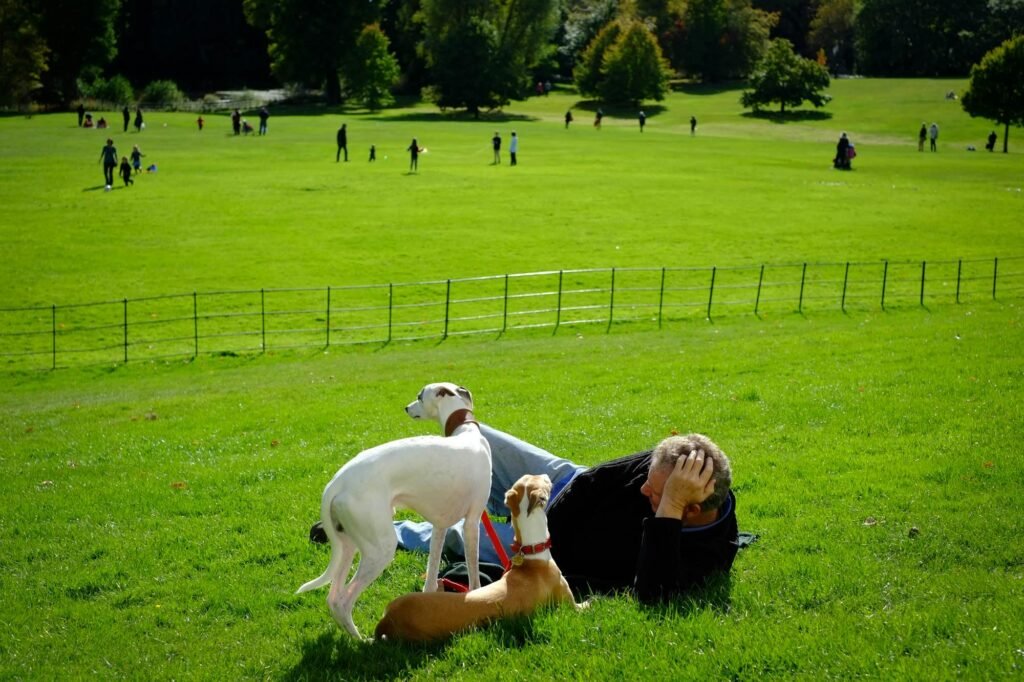
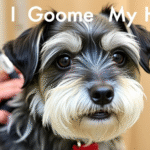
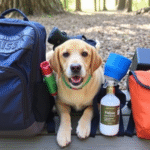
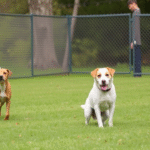


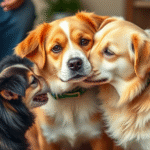
Leave a Reply